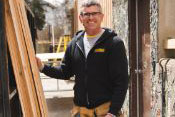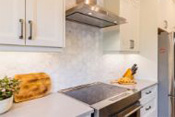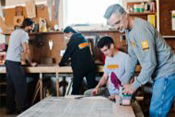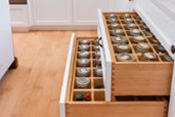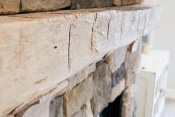Driving along the riverside, one of my companions thought she saw an eagle. They have been known to nest in the area. Rounding a bend we spot the sharp angles of an ultra modern house nestled amongst the meadow grasses. This is a house you might expect to see in California overlooking the ocean but in reality we are on Blair Road just outside of Cambridge. We have arrived at North House for a unique opportunity to view the inner workings of this solar powered demonstration house.
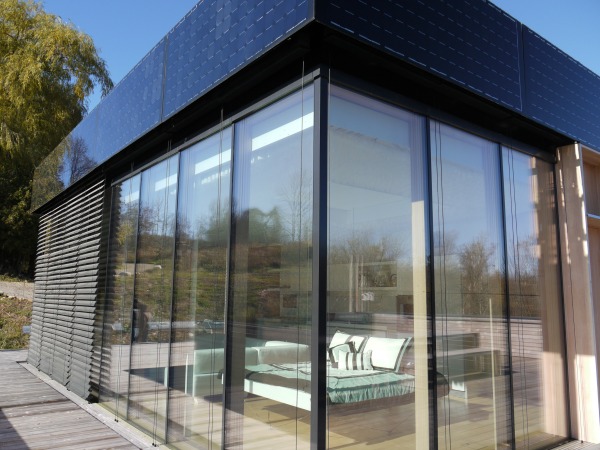
North House is one of the newest additions to rare Charitable Research Reserve, a 900 acre property on Blair Road between Cambridge and the community of Blair. The structure was originally built in 2009 by university students from Waterloo, Simon Fraser and Ryerson Universities as part of a competition in the US Department of Energy’s Solar Decathlon. After the competition closed, North House was dismantled and sat in a warehouse before it was reassembled at the rare site in 2013.
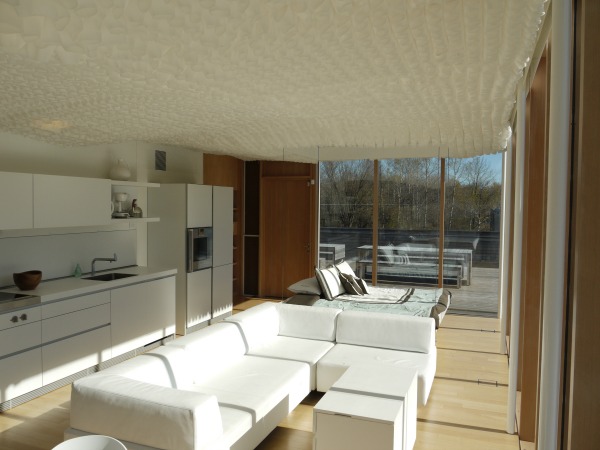
Katherine McLeod from rare was our tour guide and introduced us to the broad scope of the high tech house as well as the technical details that feature prominently throughout. The house is designed in a modular fashion so the size could be scaled to meet the living requirements of different people. The first thing you notice is the bright and open feeling. The living space is surrounded on all three sides with custom quadruple glazing held in place in fir frames. In order to control solar gain and also heat loss the windows are covered with computer controlled exterior blinds that are timed to open and close depending on the climate conditions inside and outside the house. Of course they can be manually operated if you need that extra burst of sunlight to brighten your day. The next thing that can’t be ignored is the organic shaped fabric ceiling. Five thousand individual fabric cones were hand-made by the students and fastened together at various depths and hung from a grid to form an undulating ceiling. The floors were also fascinating. The hardwood floors were installed over a phase changing material that changes from solid to liquid in order to hold and release heat slowly into the rooms. This is part of the passive solar design of the house. In order to increase interior air quality the interior walls have no drywall but are covered with wood panels.
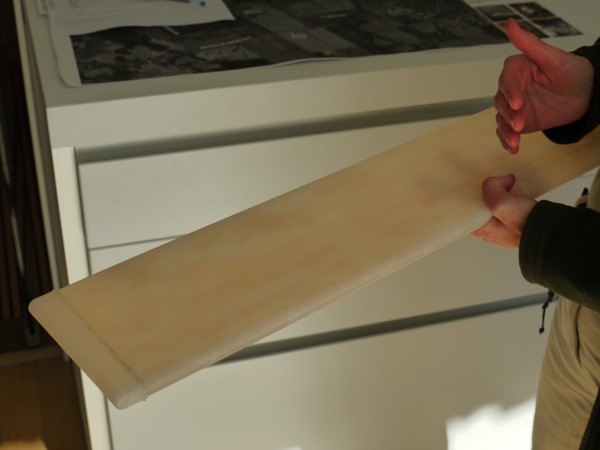
Besides the clean aesthetics of the house it is also filled with some very high tech systems. The building has photovoltaic solar panels some of which are integrated into the exterior siding of the house. These panels supply electricity to the house but the house is also tied into the electrical grid so the house can draw electricity from the grid at night or on days the panels are not producing enough to meet the needs of the systems. The flip side of being tied to the grid is the house can also feed electricity to the grid when the panels are producing more electricity than it needs. In addition to using solar energy for electrical needs there are other panels that help the house produce domestic hot water and also produce hot water for space heating. The house is cooled using a horizontal loop geothermal system. All of the mechanical systems are tightly fitted into a mechanical closet connected with a maze of pipes and wires.
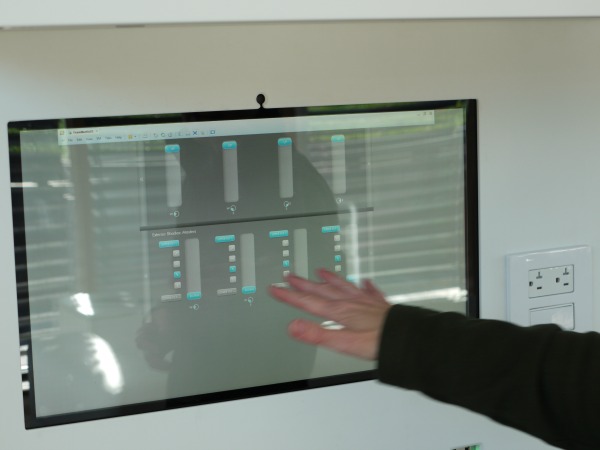
These systems on their own are impressive but the monitoring system is even more so. Each electrical outlet is individually metered and connected to a computer so the electrical load of any appliance or device can be seen. The kitchen back splash is made of a back lit canvas panel that displays a graphical representation of energy use, water use or any other goals of the residents living there.
Watch this 2 minute video for a North House Virtual Tour.
North House is truly inspiring. Many of the technologies are above the budgets for most but the overall concepts can easily be applied to everyday living. I think what stuck me most about the house was the feeling that you would be living in a mini ecosystem. You could see an immediate direct impact of all your actions regarding energy and water use. This information helps you make smart, real time choices about energy use that would help you live lightly on the planet. I left North House wanting to come back with my bags for a longer stay.






